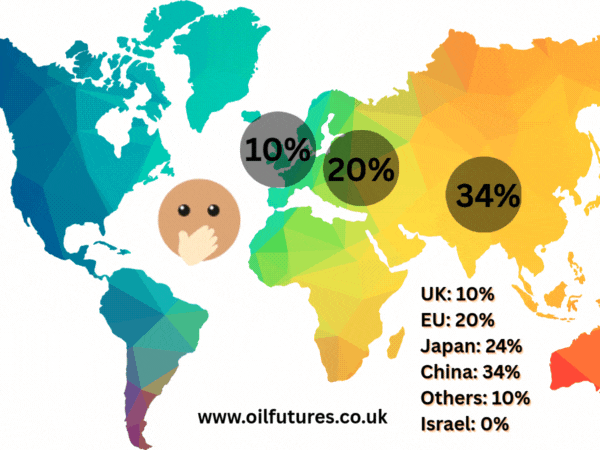China, facing a cumulative tariff rate potentially exceeding 50% when combined with prior duties, may experience a severe blow to its manufacturing sector, which had shown resilience despite earlier trade tensions. Even if China retaliates with counter-tariffs on American goods, the impact on the manufacturing sector of China will be substantial that in turn could affect the fossil fuel imports from China, the world's largest importer of crude oil. In February and March, China's manufacturing sector showed a consistent growth, defying global pessimists.
The latest round of unprecedented tariffs levied by the US on th rest of the world will weigh on the price of crude oil that is already struggling to stay above $70 a barrel - in the long run. In his speech in the Rose Garden, President Trump showed his determination to bring down energy prices to make inflation fall considerably - a key promise during the presidential campaign.
Economists warn that these measures could spike U.S. inflation, raise consumer prices, and unsettle global markets, with stock futures already dipping in after-hours trading following the announcement.
Retaliation is on the horizon, though: Canada, for instance, has pledged 25% tariffs on billions in U.S. exports, while the EU is preparing a two-phase countermeasure targeting up to €18 billion in American goods, including steel, whiskey, and agricultural products; China has signaled readiness for a "tariff war," with plans to escalate duties on U.S. imports and impose export restrictions.
However, a full-blown transatlantic trade war remains unlikely, as some leaders, including UK Prime Minister Keir Starmer, advocate for negotiation over escalation.
President Trump suggested that easing foreign tariffs on U.S. goods could lower prices for consumers abroad, such as in Europe, where American products might become more competitive. Yet, this would come at a cost: European governments, reliant on value-added taxes (VAT) and duties for revenue, could face budget shortfalls, potentially forcing them to raise domestic taxes—a move that could sow seeds of public discontent in may layers of societies.
As the world digests "Liberation Day," the tariffs signal a seismic shift in global trade dynamics, with Trump betting that economic pressure will force concessions from trading partners. Whether this gamble revitalizes American industry or ignites a costly global standoff remains to be seen.
President Trump exudes fierce optimism about the future of American workers, touting expanded job prospects at home and greater opportunities to sell U.S. goods overseas. He framed the newly imposed tariffs as a strategic double-edged sword to reshape global trade in America’s favor.
On one side, he aims to incentivize U.S. companies to invest domestically, create jobs, and contribute to the tax base. On the other, he warned that firms opting to produce abroad will face steep penalties: their goods will be taxed as foreign imports upon entering the U.S., making it harder to compete in the American market.








